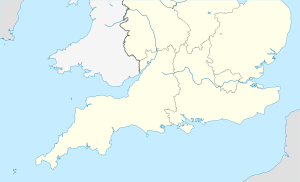Sevenstones Lightship
| History | |
|---|---|
|
|
|
| Operator: | Trinity House |
| General characteristics | |
| Type: | Lightvessel |
 |
|
|
Sevenstones Light Vessel
|
|
| Coordinates | 50°03.616′N 006°04.337′W / 50.060267°N 6.072283°WCoordinates: 50°03.616′N 006°04.337′W / 50.060267°N 6.072283°W |
| Focal height | 12 m (39 ft) |
| Range | 25 nmi (46 km; 29 mi) |
| Characteristic | Fl 3 / 30 Seconds |
| Racon | O |
| Admiralty number | A0020 |
| NGA number | 114-20 |
| ARLHS number | ENG-124 |
| Managing agent | Trinity House |
Sevenstones Lightship is a lightship (also known as a lightvessel) moored off the Seven Stones Reef which is nearly 15 miles (24 km) to the west-north-west (WNW) of Land's End, Cornwall, and 7 miles (11 km) east-north-east (ENE) of the Isles of Scilly. The reef has been a navigational hazard to shipping for centuries with seventy-one named wrecks and an estimated two hundred shipwrecks overall, the most infamous being the oil tanker Torrey Canyon on 18 March 1967. The rocks are only exposed at half tide and it was not feasible to build a lighthouse so a lightvessel was provided by Trinity House. The first was moored near the reef on 20 August 1841 and exhibited its first light on 1 September 1841. She is permanently anchored in 40 fathoms (73 m) and is 2.5 miles (4.0 km) north-east (NE) of the reef. Since 1987, the Sevenstones Lightship has been automated and unmanned.
The Seven Stones lightvessel also acts as an automatic weather station. A series of Trinity House lightships stationed near the Sevenstones Reef have measured significant wave heights (Hs or SWH)—the periodic average of the highest one third of waves in a spectrum—since the early 1960s using Ship Borne Wave Recorders (SBWR). The Sevenstones Lightship is in a very exposed location and is open to most North Atlantic storms.
As early as 1826 the government was petitioned to build a light on the reef and a second petition in 1839, supported by the Chamber of Commerce of Waterford, merchants from Liverpool and the Bristol Channel ports resulted in a meeting being held in Falmouth on 21 February 1840. It was declared that a light on or near the reef would shorten the passage around Scilly by up to thirty-six hours. As a result, the first lightship was moored, in 40 fathoms (240 ft; 73 m) on a slate and sand bottom, near the reef on 20 August 1841 and shone its first light on 1 September 1841. Originally there was a crew of ten with five on station at a time. A few months after being placed in position she drifted from her anchorage and was consequently provided with a new "mushroom" anchor which was better suited to lightships. The West Briton of 25 November 1842 reported that her cable parted and she almost became a wreck when she drove over the reef at high tide. The crew steered the ship to New Grimsby, Tresco, from where she was towed back, and on 6 January 1843 she broke adrift again. The following March, she was found drifting in a moderate southwest breeze, and was again towed to New Grimsby. She was towed back to her position on 10 April, and anchored in 42 fathoms (252 ft; 77 m).
...
Wikipedia

